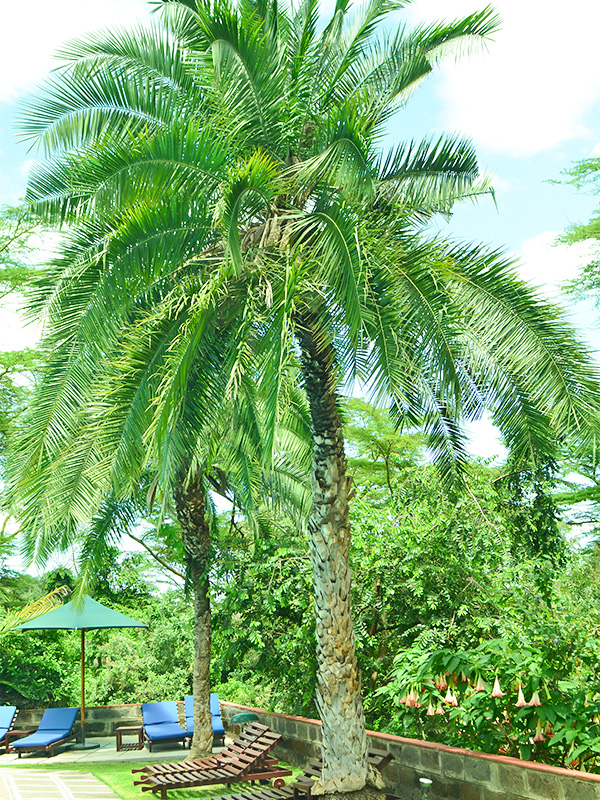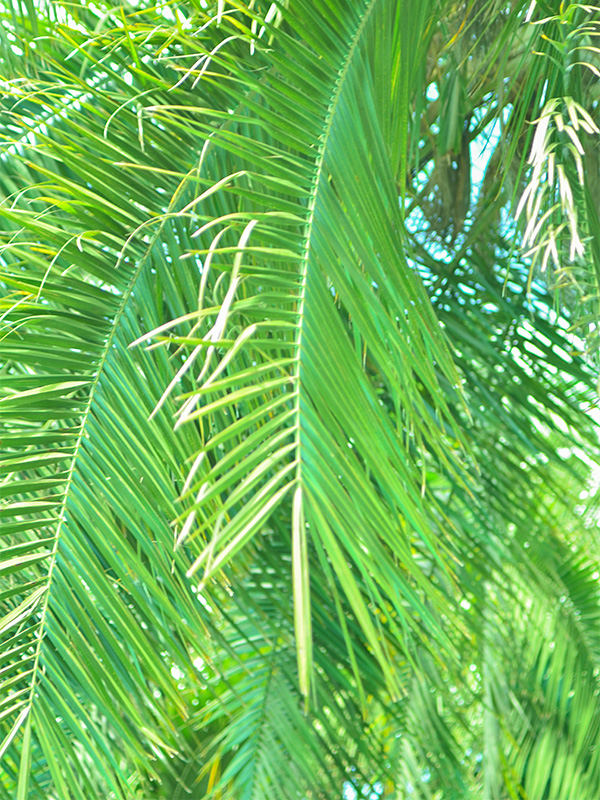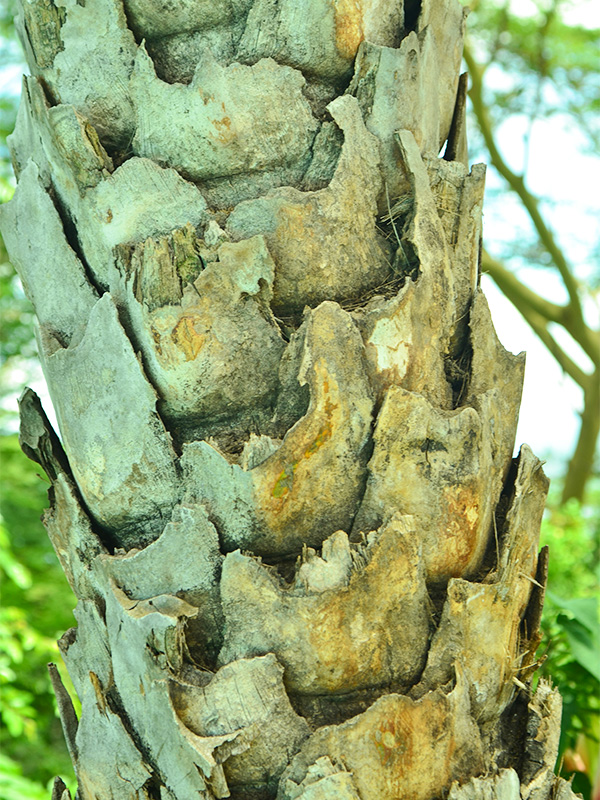| Shape | Pinnate and recurved leaves that have a feather like shape. Fruits are oval and small. |
| Landscape | Used as specimen tree, wildlife habitat, container plant and as an ornamental tree. |
| Propagation | Seeding and suckers. |
| Cultivation | Full sun to partial-shade. Tolerant to light frost, waterlogged conditions, salt-spray and moderate drought. Prefers sand or loam soils with a neutral pH.
|
| Pests | Larvae and Zophopetes dysmephilai. |
| Bark/Stem Description | Has harsh leaf scars. |
| Flower/Leaf Bud Description | Located at the top.
|
| Leaf Description | Big, feather-like shape, multi stemmed leaves with 50 petiole on each side that are 3 - 4 m long.
|
| Flower Description | Inflorescence appears near the apex of the stem. |
| Fruit Description | Small oval shape (dates) and appears in clusters. The dates are quite fleshy and can reach 4 cm in length and has one seed inside.
|
| Colour Description | The bark is brownish-grey in colour. The leaves are dark green. Male florets are yellow and female florets are yellowish-green. The date stem is yellow. The dates are yellow when young and as they mature become brown. |
| Texture Description | Coarse. The date stem is thick. |


